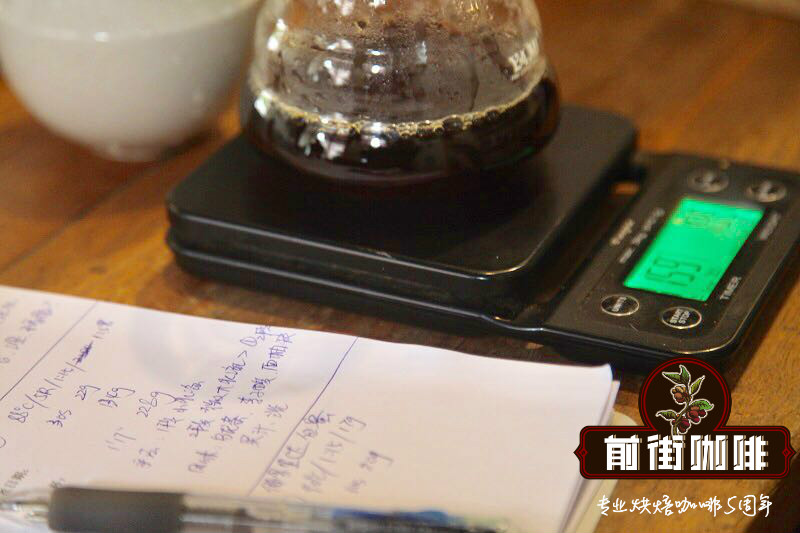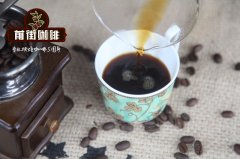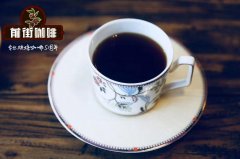What does chocolate mocha have to do with Yemeni mocha coffee? How to drink Yemeni mocha coffee?

Professional coffee knowledge exchange more coffee bean information please follow the coffee workshop (Wechat official account cafe_style)
With the most unique, rich and fascinating complex smell in the world: red wine, wild game, dried fruit, blueberry, grape, cinnamon, tobacco, sweet spices, log and even chocolate, you can see all kinds of adjectives used in Yemeni mocha coffee..
When it comes to Yemeni coffee, the hometown of Mocha, it is necessary to mention Mocha. Everyone has heard of "mocha coffee". What exactly is mocha? There are many answers to this question. Some people say that mocha is a certain place of origin, and some people remember that mocha is sweet chocolate coffee. In fact, authentic mocha coffee is only produced in the Republic of Yemen in the southwest of the Arabian Peninsula, grows on steep hillsides at elevations of 3, 000 to 8, 000 feet, and is the oldest coffee in the world.
As early as more than 500 years ago, Yemen produced coffee in an ancient way. In the early 17th century, the first Yemeni coffee sold to Europe was exported through the ancient port of Mocha, which amazed Europeans. The delicious coffee shipped from the port of Mocha was called "Mocha Coffee", which is the origin of the name "Mocha Coffee".
Neighboring Ethiopia across the Red Sea also sells coffee through the port of Mocha, so Ethiopian sun-treated coffee is often referred to as mocha. (such as Mocha Haral Ethiopia Harrar) now the old port of Mocha has long been abandoned due to sediment deposition (today's place name Al Makha) and is exported by the northwestern port of Hudaida (Hodeida). However, people have long been accustomed to the name of Mocha, which is famous to the sky.
Yemen is completely different from other coffee-producing countries because of its lack of water, dry climate and poor land, which makes the coffee trees that survive in Yemen different from those grown in other large coffee countries. Compared with Arab Yemen, the climate of Central and South America is like a well-equipped greenhouse. Adverse factors have led to the decline of the Yemeni coffee industry. But also because of these factors, the flavor of Yemeni coffee shows uncontrollable primitive wildness.
It is worth mentioning that, just as there are many meanings of mocha, there are various spellings of mocha in English: Moka, Moca and Mocca are all common spellings. I have seen as many as four local spellings in the sacks and documents of Yemeni coffee: "Mokha", "Makha", "Morkha" and "Mukha", which all have the same meaning.
The Yemeni mocha is the originator of the world coffee trade and plays an important role in promoting delicious coffee all over the world. In the 17th century, it was called "Arabica coffee" (Arabia) (this is also the origin of the name "Arabica species" later! Yemeni mocha sailed across the ocean to Italy and other European Catholic countries, and Yemeni coffee has been the only coffee producer sold to Europe for more than 150 years.
In ancient times, in conservative Catholic countries, extraordinarily good things were often considered evil, and coffee was once burdened with inexplicable evil. It was not until the Vatican Pope, who also loved coffee, declared that coffee was a Catholic drink and blessed coffee drinkers that coffee began to spread widely in Europe.
Today, Yemeni coffee farmers still produce coffee in the same way as they did 500 years ago. Coffee berries grow naturally on trees, do not use any artificial fertilizers or pesticides, receive a small amount of rain and fog on the hillside in summer, blossom and bear fruit, and in dry winter, ripe coffee berries are allowed to hang on trees to dry naturally-a very unique and rare practice because of the extremely dry climate and intense sun in Arabia, which is allowed to do so in other coffee producing areas. The same practice may cause coffee berries to rot on the trees.
Ripe or dried coffee berries fall naturally from the tree, or are shaken and picked. Coffee farmers, with a total population of nearly 1/4 in Yemen, bask their berries on their roofs, low sheds in front of their doors, or even spread them directly on the dirt floor, exposed to the intense dry winter sun. After drying the peel and pulp, grind off the dried shell and pulp with an old-fashioned stone mill (two stone mills stacked on top of each other), and the coffee beans are treated in this way.
As long as Yemeni coffee is immediately reminiscent of thick and wild sun-dried beans, Yemeni coffee farmers have been planting according to the ancient methods handed down by their ancestors, because Yemen's rugged terrain is not easy to grow and there is little rainfall. Therefore, Yemeni coffee farmers choose terraces or lowlands for planting, and choose areas that are not easily exposed to strong sun exposure, while most Yemeni farmers are poor and cannot use pesticides. Almost all of them are cultivated naturally and organically.
Qianjie Coffee suggests how to use Philharmonic to make a cup [Yemeni mocha]
Combined with the immersion extraction method of French filter kettle, the filter paper filtration of hand-brewed coffee, and the fast, pressurized extraction principle of espresso, the Philharmonic pressure is one of the artifacts. Through pressure extraction, it can have both the richness of espresso, the purity of hand-brewed coffee and the smooth taste of a French kettle.
Parameters: grinding degree BG 5R (60% pass rate of Chinese standard No. 20 sieve), water temperature 88 ℃, ratio of powder to water 1:15, extraction time two minutes.
After injecting 30 grams of water and steaming for 30 seconds, directly inject 200 grams of water, gently stir 5 times, soak until 30 grams of water, and then fill the remaining 25 grams of water.
Flavor: bright acidity, citrus acidity, with some permissible aftertaste.
END
Important Notice :
前街咖啡 FrontStreet Coffee has moved to new addredd:
FrontStreet Coffee Address: 315,Donghua East Road,GuangZhou
Tel:020 38364473
- Prev

Introduction of KONA Coffee Bean planting treatment method introduction of KONA Coffee Bean grading system
Professional coffee knowledge exchange more coffee bean information please follow the coffee workshop (Wechat official account cafe_style) about Kona coffee beans, coffee drinkers have heard of his acidic and acid-rich characteristics, but after actually staying in Hawaii for a period of time, I found that the term Kona coffee beans can only represent the quality and taste of coffee beans produced in the state of Hawaii
- Next

KONA Coffee Bean Farm introduces whether KONA Coffee beans are expensive or not KONA Coffee beans are roasted
For more information about coffee beans, please follow the Coffee Workshop (Wechat official account cafe_style). The Connor production area in Hawaii is located in the Kona district on the west side of the island of Hawaii. In the Kona region, most of the soil is rich in volcanic ash, with enough moisture and moisture, and rich in organic matter. The output of this producing area is very small and it is a rare luxury. It has a soft acid.
Related
- Detailed explanation of Jadeite planting Land in Panamanian Jadeite Manor introduction to the grading system of Jadeite competitive bidding, Red bid, Green bid and Rose Summer
- Story of Coffee planting in Brenka region of Costa Rica Stonehenge Manor anaerobic heavy honey treatment of flavor mouth
- What's on the barrel of Blue Mountain Coffee beans?
- Can American coffee also pull flowers? How to use hot American style to pull out a good-looking pattern?
- Can you make a cold extract with coffee beans? What is the right proportion for cold-extracted coffee formula?
- Indonesian PWN Gold Mandrine Coffee Origin Features Flavor How to Chong? Mandolin coffee is American.
- A brief introduction to the flavor characteristics of Brazilian yellow bourbon coffee beans
- What is the effect of different water quality on the flavor of cold-extracted coffee? What kind of water is best for brewing coffee?
- Why do you think of Rose Summer whenever you mention Panamanian coffee?
- Introduction to the characteristics of authentic blue mountain coffee bean producing areas? What is the CIB Coffee Authority in Jamaica?

